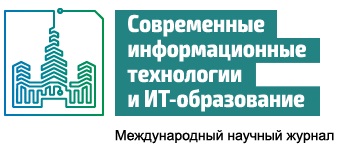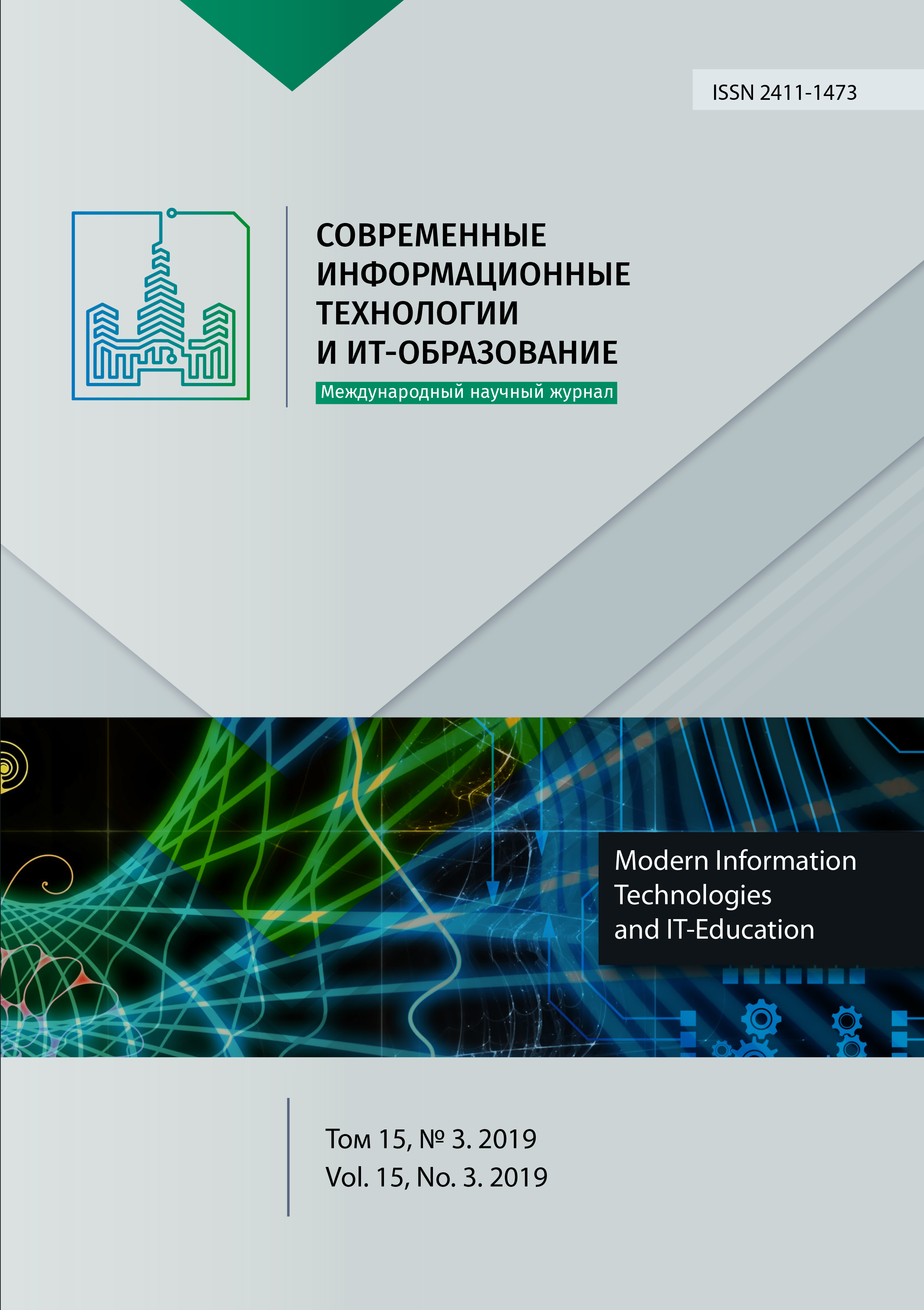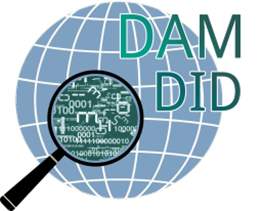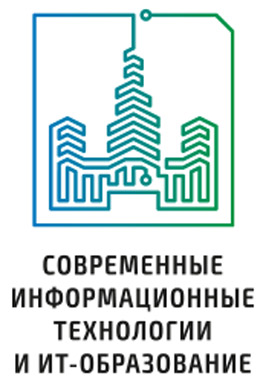On the Use of Mobile Subscribers Data in Digital Urban Planning
Abstract
According to the research of the international agency "We are social" in 2018 there are 5.135 billion mobile users in the world, which is 68% of the total population. Each mobile device generates data that can be used for application purposes. The article consists of two parts. The first part provides a brief overview of how to process four types of data from smartphones: cellular operator data, accelerometer data, GPS and Wi-Fi sensors. The overview of each group of methods is systematized in the form of tables, which will help to quickly find a method to solve the desired task or to process the available data. The second part is devoted to identifying the main advantages and disadvantages of using each type of data. This information is also presented in the form of a table, which allows you to choose the right type of data for the task. This paper provides an overview of the articles on the analysis of the main shortcomings and ways to overcome them, in particular, crowdsourcing. The conclusion is that further development in the analysis of data obtained from smartphones may consist in solving existing problems, finding new applications and sharing different types of data.
References
[2] Wang S., Min J., Yi B.K. Location-Based Services Mobiles: Technologies and Standards. Tutorial given at IEEE ICC 2008, Beijing, 2008. (In Eng.)
[3] Calabrese F., Ferrari L., Blondel V.D. Urban Sensing Using Mobile Phone Network Data: A Survey of Research. ACM Computing Surveys. 2014; 47(2):25. (In Eng.) DOI: 10.1145/2655691
[4] Chen X. et al. Data-Driven Prediction System of Dynamic People-Flow in Large Urban Network Using Cellular Probe Data. Journal of Advanced Transportation. 2019; 2019:9401630. (In Eng.) DOI: 10.1155/2019/9401630
[5] Yang F., Yao Z., Jin P.J., Xiong Y. Arterial link travel time estimation considering traffic signal delays using cellular handoff data. IET Intelligent Transport Systems. 2019; 13(3):461-468. (In Eng.) DOI: 10.1049/iet-its.2018.5186
[6] Roth J., Tummala M., McEachen J., Scrofani J. Quantifying Location Privacy in Urban Next-Generation Cellular Networks. In: Proceedings of the 51st Hawaii International Conference on System Sciences. 2018, pp. 5831-5838. (In Eng.) DOI: 10.24251/hicss.2018.731
[7] Candia J., Gonzalez M.C., Wang P., Schoenharl T., Madey G., Barabasi A-L. Uncovering individual and collective human dynamics from mobile phone records. Journal of Physics A: Mathematical and Theoretical. 2007; 41(22):224015. (In Eng.) DOI: 10.1088/1751-8113/41/22/224015
[8] Breyer N., Gundlegård D., Rydergren C. Cellpath Routing and Route Traffic Flow Estimation Based on Cellular Network Data. Journal of Urban Technology. 2018; 25(2):85-104. (In Eng.) DOI: 10.1080/10630732.2017.1386939
[9] Puura A., Silm S., Ahas R. The Relationship between Social Networks and Spatial Mobility: A Mobile-Phone-Based Study in Estonia. Journal of Urban Technology. 2018; 25(2):7-25. (In Eng.) DOI: 10.1080/10630732.2017.1406253
[10] Eagle N., Pentland A., Lazer D. Inferring Friendship Network Structure by Using Mobile Phone Data. Proceedings of the National Academy of Sciences of the United States of America. 2009; 106(36):15274-15278. (In Eng.) DOI: 10.1073/pnas.0900282106
[11] Wang D., Pedreschi D., Song C., Giannotti F., Barabasi A-L. Human mobility, social ties, and link prediction. In: Proceedings of the 17th ACM SIGKDD international conference on Knowledge discovery and data mining (KDD ’11). Association for Computing Machinery, New York, NY, USA, 2011, pp. 1100-1108. (In Eng.) DOI: 10.1145/2020408.2020581
[12] Farrahi K., Gatica-Perez D. Discovering routines from large-scale human locations using probabilistic topic models. ACM Transactions on Intelligent Systems and Technology. 2011; 2(1):3. (In Eng.) DOI: 10.1145/1889681.1889684
[13] Deville P., Linard C., Martin S., Gilbert M., Stevens F.R., Gaughan A.E., Blondel V.D., Tatem A.J. Dynamic population mapping using mobile phone data. Proceedings of the National Academy of Sciences of the United States of America. 2014. 6 p. (In Eng.) DOI: 10.1073/pnas.1408439111
[14] Wu H., Liu L., Yu Y., Peng Z. Evaluation and Planning of Urban Green Space Distribution Based on Mobile Phone Data and Two-Step Floating Catchment Area Method. Sustainability. 2018; 10(1):214. (In Eng.) DOI: 10.3390/su10010214
[15] Chu J. et al. Passenger Demand Prediction with Cellular Footprints. In: 2018 15th Annual IEEE International Conference on Sensing, Communication, and Networking (SECON), Hong Kong, 2018, pp. 1-9. (In Eng.) DOI: 10.1109/SAHCN.2018.8397114
[16] Nyhan M.M., Kloog I., Britter R., Ratti C., Koutrakis P. Quantifying population exposure to air pollution using individual mobility patterns inferred from mobile phone data. Journal of Exposure Science & Environmental Epidemiology. 2019; 29:238-247. (In Eng.) DOI: 10.1038/s41370-018-0038-9
[17] Liu S. Navigation devices & usage - Statistics & Facts. Jan 31, 2018. Available at: https://www.statista.com/topics/2221/navigation-devices-and-usage/ (accessed 16.05.2019). (In Eng.)
[18] Zhang H., Shi B., Zhuge C., Wang W. Detecting Taxi Travel Patterns using GPS Trajectory Data: A Case Study of Beijing. KSCE Journal of Civil Engineering. 2019; 23(4):1797-1805. (In Eng.) DOI: 10.1007/s12205-019-0580-6
[19] Hu X., An S., Wang J. Taxi Driver’s Operation Behavior and Passengers’ Demand Analysis Based on GPS Data. Journal of Advanced Transportation. 2018; 2018:6197549. (In Eng.) DOI: 10.1155/2018/6197549
[20] Zhao J., et al. Truck Traffic Speed Prediction Under Non-Recurrent Congestion: Based on Optimized Deep Learning Algorithms and GPS Data. IEEE Access. 2019; 7:9116-9127. (In Eng.) DOI: 10.1109/ACCESS.2018.2890414
[21] Galpern P., Ladle A., Uribe F.A., Sandalack B., Doyle-Baker P. Assessing urban connectivity using volunteered mobile phone GPS locations. Applied Geography. 2018; 93:37-46. (In Eng.) DOI: 10.1016/j.apgeog.2018.02.009
[22] Zhai Yu., Baran P.K., Wu C. Can trail spatial attributes predict trail use level in urban forest park? An examination integrating GPS data and space syntax theory. Urban Forestry & Urban Greening. 2018; 29:171-182. (In Eng.) DOI: 10.1016/j.ufug.2017.10.008
[23] Chen P., Shen Q., Childress S. A GPS data-based analysis of built environment influences on bicyclist route preferences. International Journal of Sustainable Transportation. 2018; 12(3):218-231. (In Eng.) DOI: 10.1080/15568318.2017.1349222
[24] Deng M., Huang J., Zhang Yu., Liu H., Tang L., Tang J., Yang X. Generating urban road intersection models from low-frequency GPS trajectory data. International Journal of Geographical Information Science. 2018; 32:(12):2337-2361. (In Eng.) DOI: 10.1080/13658816.2018.1510124
[25] Yun H.J., Kang D.J., Lee M.J. Spatiotemporal distribution of urban walking tourists by season using GPS-based smartphone application. Asia Pacific Journal of Tourism Research. 2018; 23(11):1047-1061. (In Eng.) DOI: 10.1080/10941665.2018.1513949
[26] Yang X., Stewart K., Tang L., Xie Z., Li Q. A Review of GPS Trajectories Classification Based on Transportation Mode. Sensors. 2018; 18(11):3741. (In Eng.) DOI: 10.3390/s18113741
[27] Duan Z., Yang Y., Zhang K., Ni Y., Bajgain S. Improved Deep Hybrid Networks for Urban Traffic Flow Prediction Using Trajectory Data. IEEE Access. 2018; 6:31820-31827. (In Eng.) DOI: 10.1109/ACCESS.2018.2845863
[28] Brezmes T., Gorricho J-L., Cotrina J. Activity Recognition from Accelerometer Data on a Mobile Phone. In: Omatu S. et al. (eds) Distributed Computing, Artificial Intelligence, Bioinformatics, Soft Computing, and Ambient Assisted Living. IWANN 2009. Lecture Notes in Computer Science, vol. 5518. Springer, Berlin, Heidelberg, 2009, pp. 796-799. (In Eng.) DOI: 10.1007/978-3-642-02481-8_120
[29] Zhao H., Hou C., Alrobassy H., Zeng X. Recognition of Transportation State by Smartphone Sensors Using Deep Bi-LSTM Neural Network. Journal of Computer Networks and Communications. 2019; 2019: 4967261. (In Eng.) DOI: 10.1155/2019/4967261
[30] Ignatov A. Real-time human activity recognition from accelerometer data using Convolutional Neural Networks. Applied Soft Computing. 2018; 62:915-922. (In Eng.) DOI: 10.1016/j.asoc.2017.09.027
[31] Almaslukh B., Al Muhtadi J., Artoli A. A robust convolutional neural network for online smartphone-based human activity recognition. Journal of Intelligent & Fuzzy Systems. 2018; 35(2): 1609-1620. (In Eng.) DOI: 10.3233/JIFS-169699
[32] Lee K., Kwan M-P. Physical activity classification in free-living conditions using smartphone accelerometer data and exploration of predicted results. Computers, Environment and Urban Systems. 2018; 67:124-131. (In Eng.) DOI: 10.1016/j.compenvurbsys.2017.09.012
[33] Lu D-N., Nguyen D-N., Nguyen T-H., Nguyen H- Vehicle Mode and Driving Activity Detection Based on Analyzing Sensor Data of Smartphones. Sensors. 2018; 18(4):1036. (In Eng.) DOI: 10.3390/s18041036
[34] Won M., Sayan S., Park K-J. DeepWiTraffic: Low Cost WiFi-Based Traffic Monitoring System Using Deep Learning. CoRR. 2018; abs/1812.08208. Available at: http://arxiv.org/abs/1812.08208 (accessed 16.05.2019). (In Eng.)
[35] Depatla S., Muralidharan A., Mostofi Y. Occupancy estimation using only WiFi power measurements. IEEE Journal on Selected Areas in Communications. 2015; 33(7):1381-1393. (In Eng.) DOI: 10.1109/jsac.2015.2430272
[36] De Montjoye Y-A., Hidalgo C.A., Verleysen M., Blondel V.D. Unique in the crowd: The privacy bounds of human mobility. Scientific reports. 2013; 3: 1376. (In Eng.) DOI: 10.1038/srep01376
[37] Roth J.D., Tummala M., McEachen J.C., Scrofani J.W. Quantifying Location Privacy in Urban Next-Generation Cellular Networks. In: Proceedings of the 51st Hawaii International Conference on System Sciences. 2018, pp. 5831-5833. (In Eng.) DOI: 10.24251/hicss.2018.731
[38] Smartphone data offered to exchange for wireless energy for charging. In: Indicator. 08.09.2018. Available at: https://indicator.ru/mathematics/mobilnyj-kraudsensing-08-09-2018.htm (accessed 16.05.2019). (In Russ.)
[39] Lane N.D., Chon Y., Zhou L., Zhang Y., Li F., Kim D., Ding G., Zhao F., Cha H. Piggyback CrowdSensing (PCS): energy efficient crowdsourcing of mobile sensor data by exploiting smartphone app opportunities. In: Proceedings of the 11th ACM Conference on Embedded Networked Sensor Systems (SenSys ’13). Association for Computing Machinery, New York, NY, USA, 2013, Article 7, pp. 1-14. (In Eng.) DOI: 10.1145/2517351.2517372
[40] Namiot D., Sneps-Sneppe M. A Survey of Smart Cards Data Mining. In: Supplementary Proceedings of the Sixth International Conference on Analysis of Images, Social Networks and Texts (AIST 2017). CEUR Workshop Proceedings. 2017; 1975:314-325. Available at: http://ceur-ws.org/Vol-1975/paper33.pdf (accessed 16.05.2019). (In Eng.)
[41] Namiot D., Pokusaev O., Lazutkina V. On passenger flow data models for urban railways. International Journal of Open Information Technologies. 2018; 6(3):9-14. Available at: https://elibrary.ru/item.asp?id=32595087 (accessed 16.05.2019). (In Russ., abstract in Eng.)
[42] Namiot D.E., Pokusaev O.N., Kupriyanovsky V.P. On Patterns for the Use of Railway Stations. Sovremennye informacionnye tehnologii i IT-obrazovanie = Modern Information Technologies and IT-Education. 2018; 14(3):756-761. (In Russ., abstract in Eng.) DOI: 10.25559/SITITO.14.201803.756-761
[43] Nekraplonna M., Namiot D. Metro correspondence matrix analysis. International Journal of Open Information Technologies. 2019; 7(7):68-80. Available at: https://elibrary.ru/item.asp?id=38532115 (accessed 16.05.2019). (In Russ., abstract in Eng.)
[44] Namiot D., Sneps-Sneppe M. On Crowd Sensing Back-end. In: Data Analytics and Management in Data Intensive Domains - Selected Papers (DAMDID/RCDL 2016). CEUR Workshop Proceedings. 2016; 1752:168-175. Available at: http://ceur-ws.org/Vol-1752/paper28.pdf (accessed 16.05.2019). (In Eng.)
[45] Namiot D., Sneps-Sneppe M. On Data Persistence Models for Mobile Crowdsensing Applications. In: Kalinichenko L., Kuznetsov S., Manolopoulos Y. (eds) Data Analytics and Management in Data Intensive Domains. DAMDID/RCDL 2016. Communications in Computer and Information Science, vol. 706. Springer, Cham, 2017, pp. 192-204. (In Eng.) DOI: 10.1007/978-3-319-57135-5_14
[46] Daradkeh Y.I., ALdhaifallah M., Namiot D. Mobile Clouds for Smart Cities. International Journal of Online and Biomedical Engineering. 2017; 13(1):76-86. (In Eng.) DOI: 10.3991/ijoe.v13i01.6320

This work is licensed under a Creative Commons Attribution 4.0 International License.
Publication policy of the journal is based on traditional ethical principles of the Russian scientific periodicals and is built in terms of ethical norms of editors and publishers work stated in Code of Conduct and Best Practice Guidelines for Journal Editors and Code of Conduct for Journal Publishers, developed by the Committee on Publication Ethics (COPE). In the course of publishing editorial board of the journal is led by international rules for copyright protection, statutory regulations of the Russian Federation as well as international standards of publishing.
Authors publishing articles in this journal agree to the following: They retain copyright and grant the journal right of first publication of the work, which is automatically licensed under the Creative Commons Attribution License (CC BY license). Users can use, reuse and build upon the material published in this journal provided that such uses are fully attributed.













